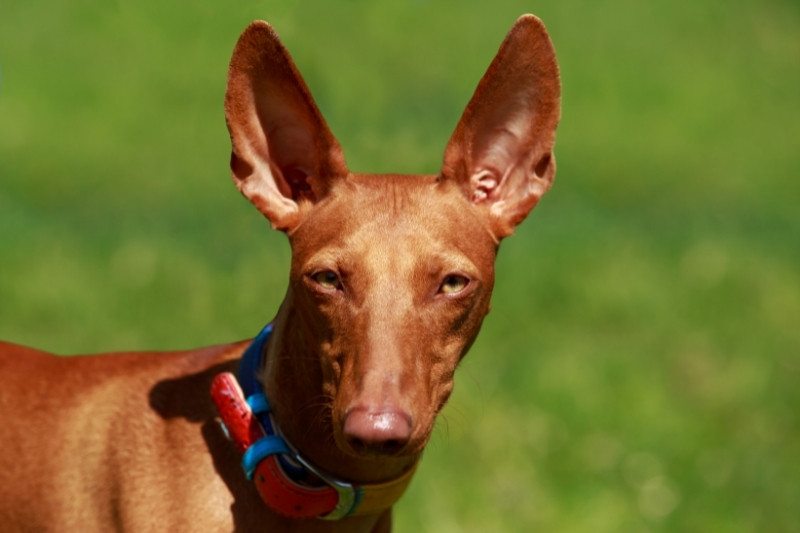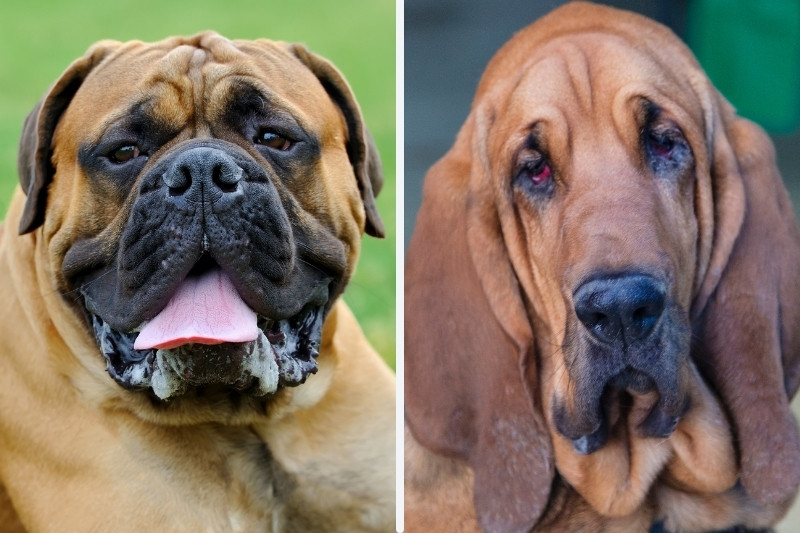The 21 colors of the Shar-Pei explained (with pictures!)

Shar-Peis are wonderful, wrinkly dogs that seem to constantly have an adorable, quizzical expression.
Their name translates as ‘sand skin’ which refers to their bristly, coarse fur. But that's not the only interesting thing about this pup’s coat.
They also come in 21 different colors! But what are the Chinese Shar-pei colors? And does it really matter what color pup you end up with?
Does the color of your dog really matter?
We’re humans, so of course, we find certain breeds and colors of dogs cuter than others. When adopting a pup, however, there are a lot of other things you should take into consideration. A responsible breeder doesn’t breed dogs for a specific color, they should ethically do it to meaningfully improve the breed – which color doesn’t.
When adopting a Shar-Pei, it’s also important to think about their specific needs, their history, and their temperament, for example, are they good around young children?
Chinese Shar-Peis need a strong leader who can train them well, spend enough time with them, and give them enough affection. They'll also need early socialization. These are much more important factors than the color of their coat.
What do the kennel clubs think?
Kennel clubs, such as the American Kennel Club (AKC), Canadian Kennel Club (CKC), United Kennel Club (UKC), and the Federation Cynologique Internationale (FCI) differ somewhat when it comes to Chinese Shar-Pei breed colors.
AKC
The AKC accepts the following Chinese Shar-Pei colors:
Black, blue, brown, cream, fawn, red, red fawn, red sable, fawn sable, cream cable, apricot dilute, blue dilute, lilac dilute, cream dilute chocolate dilute, five-point red dilute, isabella dilute, and black sable.
White, blue sable, and brown sable are considered non-standard for the Chinese Sharp-Pei.
CKC
According to the CKC: ‘Only solid colors and sable are acceptable in the Chinese Shar-Pei, although the solid colors may have shadings.’
UKC
The UKC accepts any solid color or sable for the Chinese Shar-Pei. A solid color may include darker shading or hairs of the same base color throughout the coat. They don’t accept particolored (pups with 50% or more white fur), brindle, spotted, or any combination of colors.
FCI
The FCI accepts all solid Chinese Shar-Pei coat colors except white.
Apart from color, what is standard for a Shar-Pei?
A Chinese Shar-Pei tongue is blue, any other color isn’t accepted by the kennel clubs. They do, however, mention that their tongue color can fade when they’re panting. If they’re hot, their tongue may look more light purple or pink.
Shar-Peis have tiny ears in comparison to the rest of their body. They should fold over towards their eyes – pricked ears are not accepted. A Sharp-Pei must also have a full tail that curls over the back of its body. These, along with the color of their fur, are determining factors for a Shar-Pei.
The Shar-Pei coat can be a horse coat, a bear coat, or a brush coat. All are standard and all are different lengths with the bear coat being the longest.
Shar-Pei colors
So, whether you’re thinking of entering your purebred dogs into a dog show, or are just curious about different Chinese Shar-Pei colors, here are the 18 accepted coat colors plus 3 non-standard ones.
Black Shar-Pei

Black Shar-Peis are solid in color and have a sleek and healthy-looking coat.
They don’t have patches of any other color (namely white) and can look a little more intimidating than those of a different color (although well-trained ones are still affectionate)!
Shar-Peis are quite often referred to as having hippopotamus features because of their oversized muzzle and abundance of rolls. These are certainly brought out in this color!
Blue Shar-Pei

Like other ‘blue’ dogs, a blue Chinese Shar-Pei is actually a dog with a silvery-gray color but is called blue because of its cool tone and different appearance to normal gray or black.
They can have darker fur around the ends of their noses, nails, and sprinkled across their body which is what makes them different from blue dilute Shap-Peis (but more on that later).
Brown Shar-Pei

A brown Shar-Pei is not as dark as their chocolate cousins but is darker than an apricot dilute pup. It’s quite common for the fur around their noses, nails, face, and other body parts to be dark brown or black.
Cream Shar-Pei

It’s quite normal for people to mix up these dogs with white Chinese Shar-Peis. Whilst these are considered to be a standard color, white Shar-Peis are not. Cream Shar-Peis are light yellow in color and often have darker markings around the face and body – so are not fully cream.
Fawn Shar-Pei

Fawn Shar-Peis are very cute and can look quite similar to brown Shar-Peis.
If you notice any red, ginger, or light fawn hues in their fur, it’s probably a fawn dog.
They have a lot of black pigmentation on their nose (often a solid black nose), around their eyes, and their nails.
Red Shar-Pei

When you think of a Chinese Shar-Pei, you’re probably thinking of a red one. That iconic golden-red color with a black face and black feet. They’re one of the most common colors of Shar-Pei and definitely one of the cutest!
Red Fawn Shar-Pei

As their name would suggest, these dogs’ coats are a mixture between dark fawn and chestnut red. They’re neither one nor the other but are considered a breed standard.
They can have dark pigmentation around their face and feet and can have darker fur in between their adorable rolls of skin.
Red Sable Shar-Pei
The term ‘sable’ refers to a color pattern rather than one single coat color.
It can be any combination of colors, but the hair is always lighter at the base and darker at the tip. Many breeds can be sable, and the Chinese Shar-Pei is no exception.
A red-sable Shar-Pei has a reddish color at the base of the hair and is dark brown or black at the tip. They can also have black patches on their body and face.
Fawn Sable Shar-Pei
Do you have pictures of a Fawn Sable Shar-Pei? Send it to us and we'll feature you!
Fawn sable Shar-Peis look darker than fawn Shar-Peis because the tips of their hairs are black and the base is a red/pale yellow color.
They can have darker pigmentation around their faces and nails too.
Cream Sable Shar-Pei
Do you have pictures of a Cream Sable Shar-Pei? Send it to us and we'll feature you!
Cream sable Shar-Peis are not as common as cream and cream dilute dogs but they’re just as cute.
They have very pale yellow fur with solid black tips and can have darker markings on their face and body.
Black Sable Shar-Pei
Black sable Shar-Peis are beautiful dogs that tend to be darker than other sable-colored pups. As with the others, they have a lighter-colored coat that has darker tips.
A black sable, however, has more black tips and so, therefore, appears darker.
Apricot Dilute Shar-Pei
The term ‘dilute’ refers to a specific gene that many pups can carry. Darker colors on the coat are diluted to become paler, which often results in the darker hairs around the nose, feet, and nails being pink or a similar color to the rest of the coat.
An apricot dilute Shar-Pei is, as you’d imagine, the color of apricots. Their pale yellow/orange fur is pinker around their face and they don’t have darker markers. Parts of their fur may be a dark apricot color.
Blue Dilute Shar-Pei
These pups are generally self-colored (meaning each hair is a uniform shade) and their fur is a beautiful, shiny gray color.
Because these Chinese Shar-Peis are a dilute, they don’t have darker hairs around their face and feet but they can have a pinkish tinge.
Lilac Dilute Shar-Pei
Lilac dilute Shar-Peis are really distinctive looking and very attractive! Their coloration has actually been diluted twice, first by the chocolate gene and then by the blue gene, which gives them their beautiful purple-hued coat.
Because they’re dilute pups, they’re generally self-colored or they have pinkish tinges around their face and feet.
Cream Dilute Shar-Pei
You’ve probably guessed it, but a cream dilute Shar-Pei is a cream-colored pup with no darker hairs around the face.
They’re self-colored and often have a pinkish look to them.
Chocolate Dilute Shar-Pei
Chocolate dilute Shar-Peis have a richer, more distinctive colored coat than brown Chinese Shar-Peis.
Because of their dilution, Chocolate dogs don’t have any darker areas on their body and their face is the same color as the rest of their body.
Five-Point Red Dilute Shar-Pei
Color points on a dog (or on many other animals for that matter) refer to distinct areas that are different colors from the rest of the body.
In the case of the five-point red dilute Shar-Pei, it’s the nose, eyes, skin, footpads, and buttocks. The hair in these areas is a darker red color and the rest of the body is a reddy-fawn color.
Isabella Dilute Shar-Pei

Is a Weimaraner gray or pale brown? Well, the (beautiful) color of a Weimaraner is described as Isabella dilute.
Shar-Peis with this coloring have a pale gray/silver/pale brown coat without darker markings around the face and feet.
Non-standard (but just as loveable) Shar-Pei colors
White Shar-Pei
An albino Shar-Pei lacks any pigmentation at all. A white Chinese Shar-Pei, however, is a slightly more cream color and can have pink markings around their eyes and nose. They may not be a breed standard but they're very cute!
Blue Sable Shar-Pei
If I’m allowed to be slightly biased, blue sable Shar-Peis are one of my favorite colors – they’re so unique!
As with other sable colorings, they have a blue main coat that has black hairs, which gives them an overall darker appearance.
Brown Sable Shar-Pei

Even though brown sable Shar-Peis are darker in color than brown Shar-Peis they’re not as dark as chocolate pups (slightly complicated, I know).
Brown pups have quite a light brown coat and the sables have dark tips which give them their distinct look.
And there you are! All 21 Chinese Shar-Pei colors. Which are your favorites?
I’m Charlotte, a content and copywriter from the North of England and currently living in Berlin. Animals have always been a huge part of my life, so writing about dogs is a total pleasure! I love all kinds of dogs and their cheeky personalities, but I’d have to say Weimaraners are my favourite!







